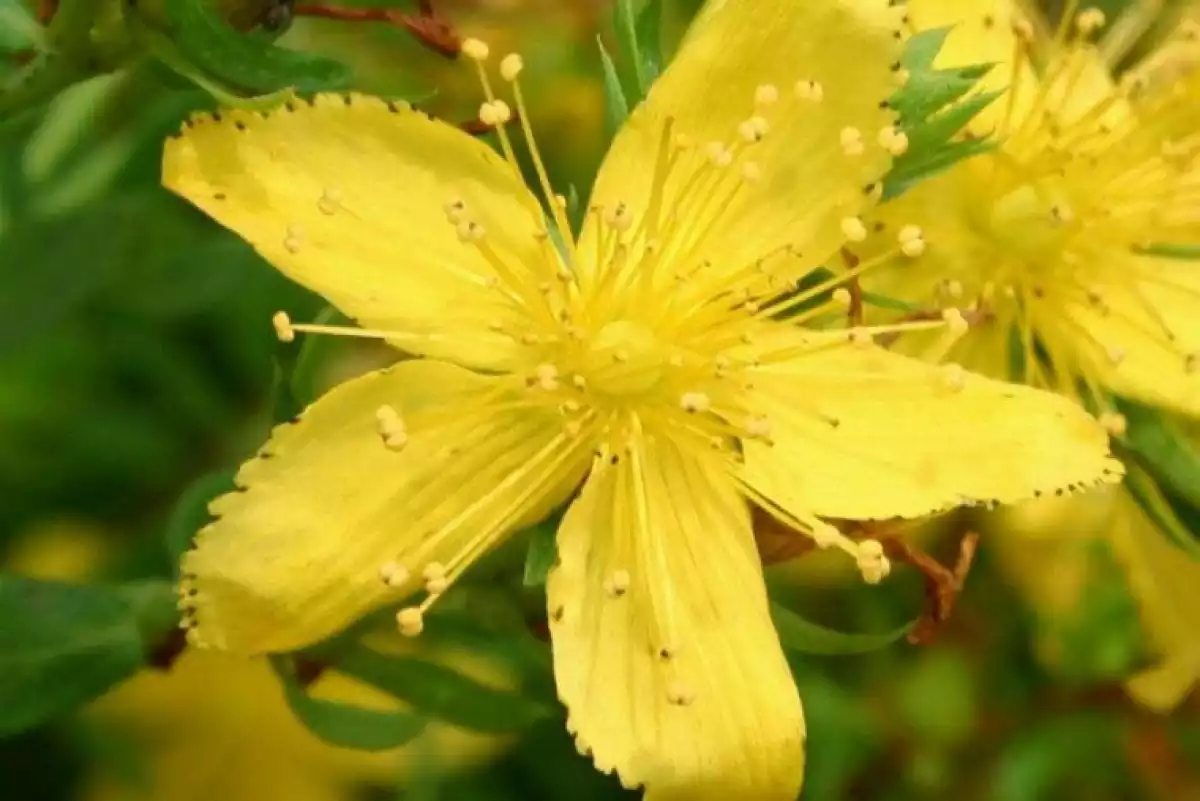
St. John's Wort: the Magic Plant to Scare Off Sadness
Discover all you need to know about this antidepressant herb and its skin benefits
This magical plant has powers that were very useful for protecting homes and cheering people up. Since long ago, Hypericum perforatum or St. John's wort has been one of the medicinal and magical plants par excellence.
Find out all you need to know about the St. John's wort benefits.
[predef]mh-general-eng-489[/predef]
What is Saint John's wort?
Hypericum perforatum is a plant originating in Europe that grows in many temperate parts of the world. Since the first century, it has been attributed with medicinal and magical properties, and since then it has been used by sorcerers and healers as a powerful remedy against depression and sadness.
How can you recognize St. John's wort? This herbaceous plant grows wild on roadsides and in dry, sunny environments. It has a branchy stem on the top, with leaves mottled with translucent glands containing a coloured liquid of essential oils.
These glands draw a series of spots on the leaf that looks like it is perforated, and hence the scientific name: perforatum (perforated). Hypericum probably comes from the Greek hyperikon, for its function of repelling evil spirits.
This plant has a bitter taste, but it is not a particularly aromatic plant. Even so, people believed that its smell repelled demons.
St. John's wort magic properties
This plant was very appreciated by the Greek and Roman civilizations, which many centuries ago were great connoisseurs of herbs and their powers.
The accumulation of myths around this plant, such as the fact that the intense red sap inside of it was the very blood of St. John, and the knowledge they began to obtain from this plant gave it a double function as a protective plant and as a herb to cheer you up and revitalize the organism.
For this reason, it was frequent that in the Mediterranean regions St. John's wort was placed in the lintel of the door of the house as a protective barrier.
On the other hand, when people were not in the mood or the body experienced a lowering of the immune system, this plant was also used as a magic plant to restore mood and end sadness. Later, that magic use evolved into a much more studied medicinal use.
Health St. John's wort benefits
This is how little by little the experts in medicinal herbs were discovered in the leaves and glands of this plant numerous active principles and beneficial substances for the body that are still being explored today. Although it has many properties, it is used mainly for depression, scarring, and anti-inflammatory action.
1. Antidepressant properties
It was believed that Saint John's wort was a magical plant that scared away sadness, but this also had a scientific explanation. Today, the use of Hypericum perforatum as a medicinal plant is almost completely reduced to its antidepressant effect.
Until now it was believed that this property was due to the hypericin it contains, but more recent studies point out that also help its antidepressant effect substances such as hyperforin and flavonoids. All these substances cause a blockade of monoamine oxidase and an inhibition of the uptake of serotonin and dopamine.
The use of this plant as antidepressant extracts is indicated for mild and moderate depressions in clinical studies, with the same efficacy as synthetic antidepressants. Also, the great advantage of Saint John's wort is that it has hardly any side effects.
2. How to make St. John's wort essential oil
Since this plant was discovered, one of the properties that stand the most is its scarring action and its use as a skin balm. This is what gave it the name of "wounds herb".
This medicinal and magic plant has also antiseptic properties. It is usually applied on wounds to prevent infection. Its use as a healer and to keep the skin smooth and youthful acquires more strength when applied in the form of essential oils.
To make St. John's wort essential oil at home, take a glass jar and fill it halfway with dried leaves, then add vegetable oil until the jar is full. Close it and leave to macerate in a dark, cool place for 40 to 50 days. Then filter the homemade hypericum oil and store it in an opaque container.
3. Hypericum perforadum, an anti-inflammatory remedy
The powerful effects of hypericum perforadum as an anticoagulant and active anti-inflammatory ingredient have also been revealed, and above all, its recurrent use for intestinal problems, a remedy against gastroenteritis and to treat hemorrhoids. It also has antispasmodic qualities.
Used in the form of oil or poultice, Saint John's wort antibacterial and analgesic properties help relieve pain and reduce inflammation. It is also usually taken as tea and usually produces antibiotic effects. Taken in a moderate dose its side effects are very limited.